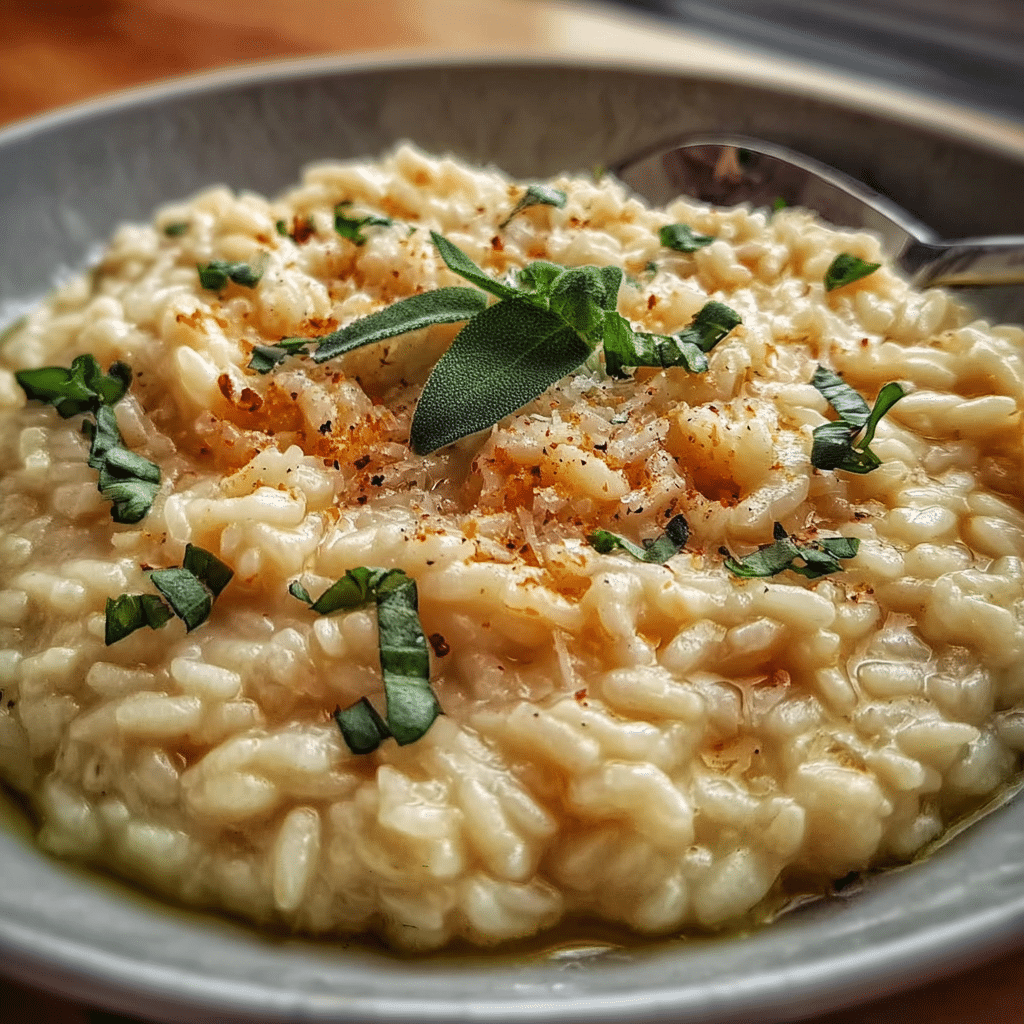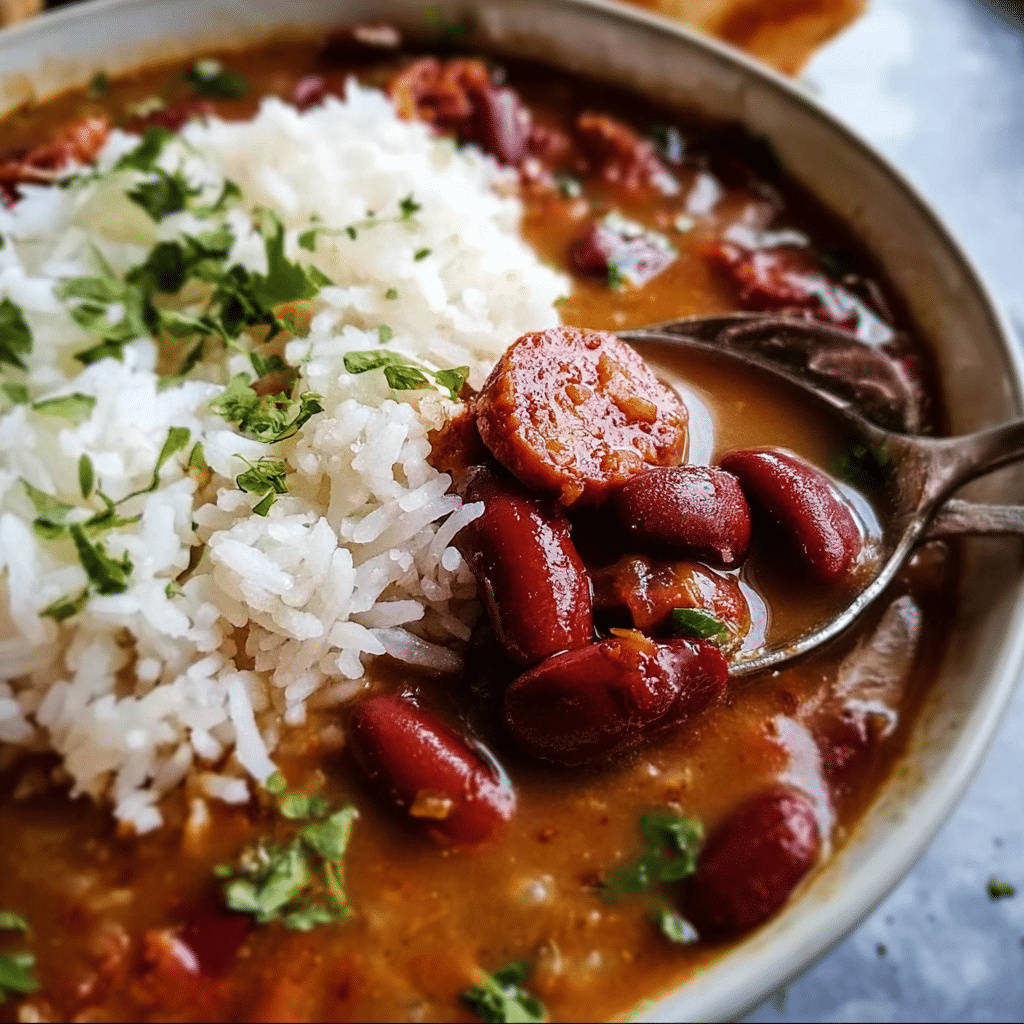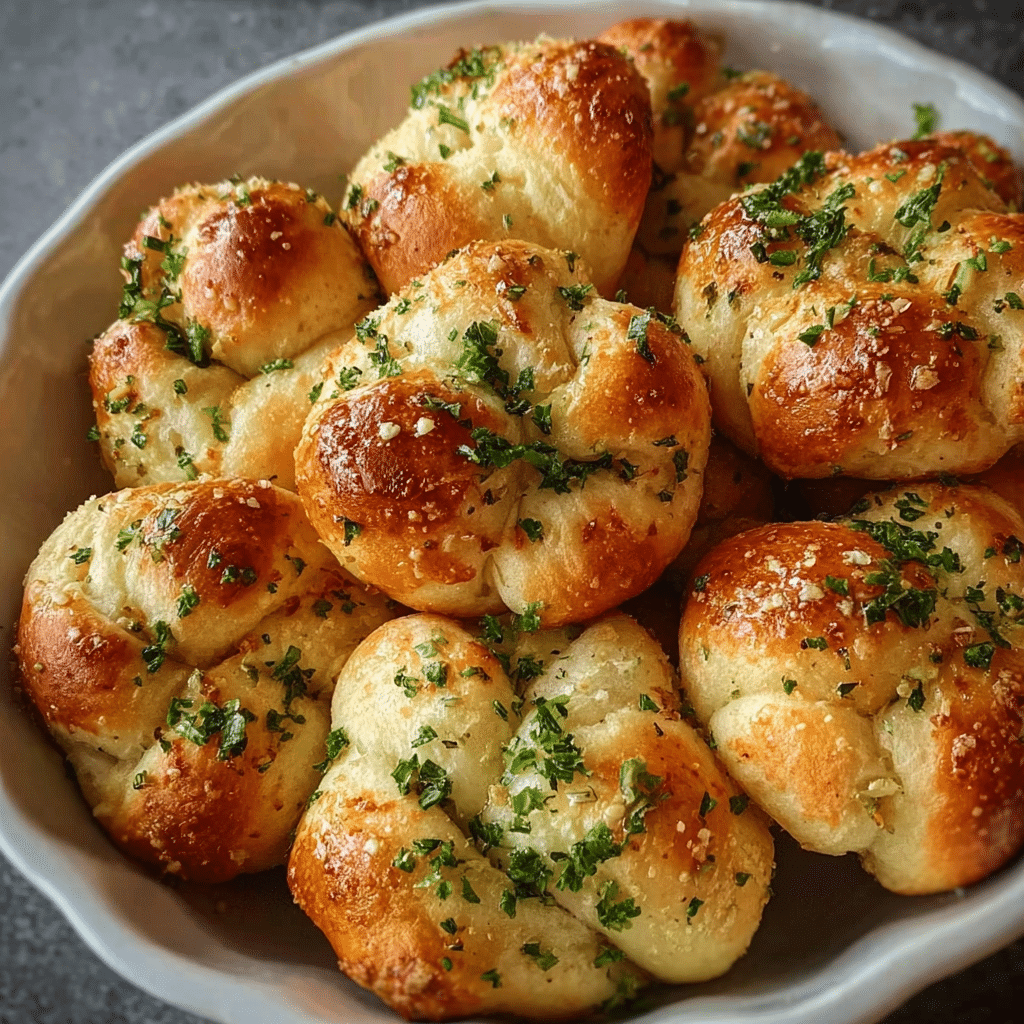Sheet pan chicken has become a staple in my kitchen, a reliable recipe that brings comfort and joy with every bite. It was a chilly autumn evening when I first stumbled upon this culinary gem. I was flipping through a well-worn cookbook, eager to find a dish that would warm my family’s hearts and fill our home with enticing aromas. The vibrant colors of sweet potatoes, apples, and veggies caught my eye, and I knew I had to try it. Little did I know, this seemingly simple sheet pan chicken recipe would not only become a family favorite but would also weave itself into the fabric of our weekly dinners.
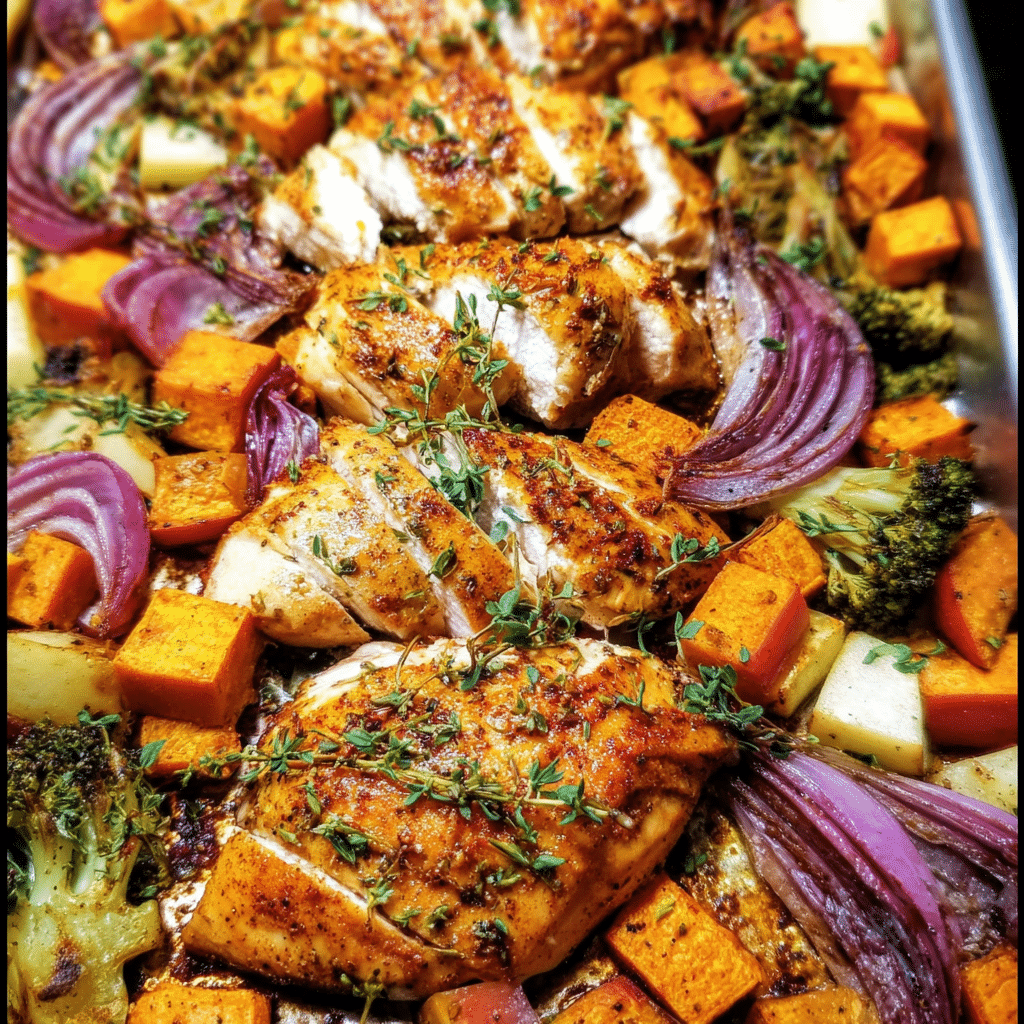
As I gathered the ingredients, I was reminded of my grandmother’s kitchen, where she would often roast chicken alongside seasonal vegetables. She had a knack for transforming basic ingredients into something extraordinary, and that inspired me to embrace the same philosophy. The recipe I discovered was a modern twist—a one-pan meal that combined protein, carbohydrates, and vibrant veggies, all cooked together to create a symphony of flavors. It was like a nostalgic nod to my childhood, yet so fresh and relevant for our busy lives today.
The Story Behind This Recipe
Sheet pan chicken has deep roots in home cooking, where simplicity meets satisfaction. Traditionally, roasting a chicken was a way to bring families together, often reserved for special occasions or Sunday dinners. As the culinary world evolved, so did the techniques and styles of cooking. The rise of sheet pan meals reflects our fast-paced lives, where time is precious, and convenience is key. The beauty of this dish lies in its adaptability; it can easily embrace seasonal ingredients, allowing cooks to remain flexible based on what’s available.
What makes my version of sheet pan chicken special is the balance of sweet and savory. The caramelized sweet potatoes and tart apples complement the juicy chicken perfectly, creating a dish that feels indulgent without being heavy. The addition of seasonal vegetables not only adds color but also enhances the nutritional profile, making it an excellent choice for families looking to pack their meals with wholesome goodness. This recipe has become my go-to for busy weekdays, yet it still feels special enough for a cozy weekend dinner.
Why You’ll Love This Dish
This sheet pan chicken recipe is not just about convenience; it’s about creating memories. I remember the first time I served it to my family. The aroma wafted through the house, and as we gathered around the table, I felt a sense of warmth and connection. Each bite sparked conversations about our day, laughter about the little things, and gratitude for sharing a meal together. In a world where we often rush from one activity to the next, this dish reminds us to slow down and enjoy the moment.
Seasonally, this meal shines brightly in the fall, when sweet potatoes and apples are at their peak. However, its versatility allows it to be enjoyed year-round. In the spring, you could swap in fresh asparagus and baby carrots, while in the summer, zucchini and cherry tomatoes could take center stage. The ability to customize the vegetables based on what’s in season makes it a dish I can rely on, no matter the month. Plus, cleanup is a breeze—just one pan to wash! For busy families seeking quick yet nutritious dinner solutions, this recipe is a lifesaver.
As you read on, you’ll discover not just my beloved recipe but also tips and tricks for perfecting your own sheet pan chicken creation. I’ll share variations, cooking times, and even some personal anecdotes that will inspire you to make this dish your own. So grab your apron, preheat that oven, and let’s dive into the wonderful world of sheet pan chicken!
The Rich History and Cultural Significance of sheet pan chicken
The history of sheet pan chicken can be traced back to the age-old tradition of roasting, a method that has been cherished across cultures for centuries. Roasting food, especially meats, has been a common practice since the advent of cooking. The use of a sheet pan as a vessel for roasting is a relatively modern adaptation, allowing for ease and efficiency. Historically, families would gather around the hearth, eagerly waiting for a whole bird to roast, often accompanied by root vegetables that would caramelize in the drippings below.
Origins and History
While the exact origins of sheet pan chicken are difficult to pinpoint, many culinary historians agree that the concept of roasting chicken dates back to ancient civilizations. The Romans, for instance, would prepare whole birds, often stuffing them with herbs and spices. As roasting techniques evolved, so did the equipment used. The introduction of the modern oven and baking sheets allowed home cooks to experiment with different preparations, leading to the creation of the one-pan meals we enjoy today.
In contemporary cooking, particularly in North America, sheet pan meals surged in popularity as families sought quick yet nutritious dinner options. The beauty of sheet pan chicken lies in its ability to bring together protein and vegetables in one convenient dish, making it an ideal choice for busy weeknights. From busy parents to young professionals, this method has revolutionized home cooking, allowing for flavorful meals without the hassle.
Cultural Significance
Sheet pan chicken has become a beloved dish in many households, not just for its convenience but for its cultural significance as well. In numerous cultures, sharing a meal is a way to celebrate community and family. This dish embodies that spirit, as it encourages gathering around the table and enjoying a wholesome meal together. It’s common to see variations of roasted chicken accompanied by seasonal vegetables at family gatherings, holiday dinners, and potlucks, showcasing the dish’s adaptability across different occasions.
Moreover, famous chefs and restaurants have embraced the sheet pan method, elevating it to new heights with gourmet twists. Renowned culinary figures often share their takes on this classic, incorporating unique spices or international flavors that reflect their heritage. This evolution speaks to the dish’s versatility and how it can transform based on the cook’s creativity and cultural influences.
Nutritional Benefits
Beyond its cultural significance, sheet pan chicken offers a wealth of nutritional benefits. Combining lean protein with a variety of vegetables creates a balanced meal that is both satisfying and nourishing. Chicken is an excellent source of protein, essential for muscle repair and overall health, while sweet potatoes and other vegetables provide vital vitamins and minerals.
Sweet potatoes, in particular, are rich in beta-carotene, an antioxidant that supports eye health, and they offer dietary fiber that aids digestion. Adding colorful vegetables not only enhances the meal’s aesthetic appeal but also increases its nutritional density. By making sheet pan chicken a regular part of your meal rotation, you’re ensuring that your family enjoys a wholesome, balanced dinner that can be prepared with minimal effort.
In summary, the rich history and cultural significance of sheet pan chicken make it more than just a convenient meal; it’s a dish that connects us to our culinary roots and fosters community and togetherness. With each bite, you’re not only savoring delicious flavors but also participating in a tradition that celebrates family, nourishment, and the joy of cooking. As you explore this recipe, you’ll understand why this dish has earned its place in kitchens around the world and why it deserves a spot in yours.
Essential Ingredients for Perfect sheet pan chicken
When it comes to creating a delightful meal that’s both satisfying and easy to prepare, sheet pan chicken is a go-to favorite in many households. Not only does it deliver a harmonious blend of flavors, but it also simplifies the cooking process with minimal cleanup. To achieve the perfect sheet pan chicken, it’s crucial to gather the right ingredients. In this section, we will explore the essential ingredients needed, their roles, how to select the best quality, and some budget-friendly tips for your shopping list.
Essential Ingredients
- Bone-in Chicken Thighs or Breasts (4 pieces) – Chicken thighs are juicier and more forgiving than breasts, but you can use either depending on your preference.
- Sweet Potatoes (2 large) – Sweet potatoes add a lovely sweetness and nutritional value, complementing the savory chicken.
- Apples (2 medium, preferably Granny Smith or Honeycrisp) – Apples provide a tart contrast that balances the dish’s richness.
- Brussels Sprouts (1 pound) – These mini-cabbages contribute a hearty, slightly bitter flavor that pairs well with the sweetness of the potatoes and apples.
- Olive Oil (1/4 cup) – A good quality olive oil not only helps in roasting but also adds flavor and moisture.
- Dijon Mustard (2 tablespoons) – This adds depth and a bit of zing to the dish.
- Garlic (4 cloves, minced) – Garlic brings an aromatic quality that enhances the overall flavor.
- Fresh Thyme (2 teaspoons, chopped) – Thyme adds an earthy note that complements the chicken beautifully.
- Salt and Pepper (to taste) – Essential for seasoning and enhancing the flavors of all ingredients.
Each of these ingredients plays a pivotal role in crafting an unforgettable sheet pan chicken dish. For instance, the chicken thighs provide moisture and flavor, while sweet potatoes offer a sweet, hearty base. The acidity from the apples cuts through the richness of the chicken, creating a flavor profile that dances on the palate. Brussels sprouts add a wonderful texture and a touch of bitterness, ensuring that the dish is well-rounded.
Print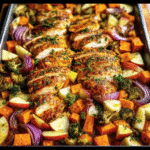
Sheet Pan Chicken Recipe
Ingredients
- ½ cup olive oil
- 1 lemon, juiced (about 3 tablespoons)
- 4 garlic cloves, minced
- 2 teaspoon dried oregano
- 1 teaspoon dried thyme
- 1 teaspoon Dijon mustard
- 1 teaspoon kosher salt
- ½ teaspoon freshly ground black pepper
- 6 chicken thighs, bone-in, skin-on
- 1 medium zucchini, halved lengthwise and sliced
- 1 yellow bell pepper, chopped into 1-inch pieces
- ½ large red onion, thinly sliced into wedges
- 1 pint cherry or grape tomatoes
- ½ cup kalamata olives, pitted
- ¼ cup feta cheese
- 2 tablespoons finely chopped fresh parsley
Instructions
- Make the marinade. Preheat the oven to 425°F (220°C). In a small bowl, whisk together the oil, lemon juice, garlic, oregano, thyme, Dijon mustard, salt, and pepper.
- Marinade in a bowl.
- Marinate the chicken. Place the chicken thighs in a bowl and pour ⅔ of the marinade on top, then use your hands to toss the chicken in the marinade and make sure it’s well coated. Marinate the chicken for 10 to 15 minutes.
- Marinated Greek lemon chicken in a bowl.
- Prep the vegetables. While the chicken is marinating, spread the zucchini, bell pepper, red onion, and tomatoes onto the baking sheet and drizzle the remaining marinade on top. Toss together to coat the vegetables.
- Vegetables on a sheet pan.
- Bake. Add the chicken thighs the baking sheet, nestling them around the veggies, and bake for 30 minutes.
- Sheet pan chicken.
- Add the final touches. Remove the baking sheet from the oven, add the olives and feta and then place it back in the oven for another 10 to 15 minutes, or until the vegetables are softened and the chicken is cooked through to 165°F.
- Cooked chicken and vegetables on sheet pan.
- Sprinkle the chicken and vegetables with chopped fresh parsley before serving.
Shopping Tips
When shopping for your ingredients, quality is key. Opt for organic chicken if possible; it tends to be more flavorful and free from antibiotics and hormones. Look for thighs that are plump and have a nice layer of skin. For the sweet potatoes, choose ones that are firm, without any soft spots or blemishes. The color of the skin can vary, but vibrant, unblemished skin is a good indicator of freshness.
Apples should be crisp and firm. Granny Smith apples will offer a tart flavor, while Honeycrisp provides a sweeter note. For Brussels sprouts, select those that are compact with bright green leaves. Fresh herbs like thyme can often be found in the produce section; choose sprigs that are vibrant and fragrant.
Seasonal availability can also impact your dish. Sweet potatoes are generally available year-round, but the best time to buy them is in the fall. Apples have a season that spans from late summer to early spring; buying them in-season will ensure peak flavor and freshness. Brussels sprouts are typically harvested in late fall to early winter, making them a great choice for a winter meal.
Substitutions and Alternatives
If you’re dealing with dietary restrictions or simply want to mix it up, there are plenty of substitutions you can make in this sheet pan chicken recipe. For instance, if you’re avoiding chicken, you can substitute with bone-in pork chops or even firm tofu for a vegetarian option. The cooking time may vary, so be sure to adjust accordingly.
Sweet potatoes can be replaced with regular potatoes or butternut squash for a different flavor profile. If you’re looking to cut down on sugar, consider using a neutral vegetable like carrots or parsnips instead of apples; they will still provide sweetness without the added sugars. For those who are gluten-free, ensure that your mustard is certified gluten-free, as some brands may contain wheat.
Storage is another consideration. Fresh chicken can be stored in the refrigerator for up to two days before cooking, while sweet potatoes will last for several weeks in a cool, dark place. Apples can be kept in the fridge for a few weeks, and Brussels sprouts should be used within a few days for the best texture. If you have leftover cooked chicken, it can be refrigerated for up to four days or frozen for up to three months.
In terms of cost-saving, buying in bulk, especially for items like olive oil and spices, can lead to substantial savings. Consider shopping at local farmers’ markets for fresh produce; not only can you find better pricing, but you’re also supporting local agriculture. Lastly, when it comes to organic versus conventional, if your budget allows, choose organic for the items on the “Dirty Dozen” list, which includes apples and potatoes, as they tend to retain more pesticides.
Detailed Step-by-Step sheet pan chicken Cooking Instructions
Now that we’ve covered the essential ingredients for your sheet pan chicken dish, it’s time to dive into the detailed step-by-step cooking instructions. This recipe is designed to be straightforward and enjoyable, even for novice cooks! With a cooking time of about 30 minutes, you’ll have a delicious, wholesome meal ready in no time.
Preparation Steps
- Preheat Your Oven: Begin by preheating your oven to 425°F (220°C). This high temperature is crucial for achieving that crispy, golden-brown finish on the chicken and veggies.
- Mise en Place: Gather all your ingredients and tools—this includes your chicken, sweet potatoes, apples, Brussels sprouts, olive oil, Dijon mustard, garlic, thyme, salt, and pepper. Having everything organized makes the cooking process smoother and more enjoyable.
- Wash and Chop Vegetables: Rinse the sweet potatoes under cold water, scrubbing off any dirt. Peel them if you prefer, then cut them into 1-inch cubes. For the Brussels sprouts, trim the ends and slice them in half. Core and slice the apples into wedges, leaving the skin on for added texture.
- Prepare the Chicken: Pat the chicken thighs dry with paper towels. This step is vital as it ensures a crispy skin. Season both sides generously with salt and pepper.
- Mix Your Marinade: In a bowl, whisk together the olive oil, Dijon mustard, minced garlic, and fresh thyme. This marinade will infuse your chicken with flavor and help the veggies roast beautifully.
Cooking Process
- Coat the Chicken: Place the chicken thighs in a large mixing bowl and pour half of the marinade over them, ensuring they are well coated. Let them marinate for at least 10 minutes while you prepare the vegetables.
- Combine the Veggies: In another bowl, combine the sweet potatoes, Brussels sprouts, and apple wedges. Drizzle the remaining marinade over the veggies and toss until they are evenly coated. This step is essential for ensuring that every bite is full of flavor.
- Prepare the Sheet Pan: Line a large baking sheet with parchment paper or aluminum foil for easy cleanup. Spread the veggies out in a single layer, leaving space in the center for the chicken.
- Arrange the Chicken: Place the marinated chicken thighs skin-side up on the baking sheet, nestled among the veggies. This allows the chicken juices to drip onto the vegetables, enhancing their flavor.
- Roast: Place the sheet pan in the preheated oven and roast for about 25-30 minutes. You’ll know it’s done when the chicken is golden brown and reaches an internal temperature of 165°F (75°C). The vegetables should be tender and slightly caramelized.
Final Assembly
- Rest the Dish: Once cooked, remove the sheet pan from the oven and let it sit for 5 minutes. This resting period allows the juices in the chicken to redistribute, ensuring every bite is moist and flavorful.
- Serve: Use a spatula to transfer the chicken and vegetables to a serving platter. Drizzle any remaining juices from the pan over the top for added flavor.
- Garnish (Optional): If desired, sprinkle some fresh thyme leaves over the dish before serving. This adds a beautiful touch and a fresh burst of flavor.
- Leftovers: If you have any leftovers, store them in an airtight container in the refrigerator for up to four days. Reheat in the oven or microwave before serving again.
Common mistakes to avoid include overcrowding the sheet pan, which can lead to steaming instead of roasting, and not allowing the chicken to rest before serving. Remember, the key to a successful sheet pan chicken lies in following these steps and making sure that each ingredient is given the attention it deserves. By doing so, you’ll create a meal that is not only delicious but also a joy to prepare and share with loved ones.
With the right preparation, cooking techniques, and a little bit of love, your sheet pan chicken will become a staple in your home, bringing warmth and comfort to your dinner table!

Professional Tips and Techniques for sheet pan chicken
When it comes to cooking, especially with something as versatile and satisfying as sheet pan chicken, there are numerous ways to enhance your dish and elevate your culinary game. The beauty of sheet pan meals lies in their simplicity and the ease of cleanup, but that doesn’t mean you can’t add a touch of professionalism to your cooking. In this section, we’ll explore various professional tips and techniques that will ensure your sheet pan chicken turns out deliciously every time.
Professional Techniques
First and foremost, let’s talk about the key to a perfectly cooked sheet pan chicken: temperature control. Preheat your oven to 425°F (220°C). This high temperature is essential for achieving that coveted crispy skin and caramelized vegetables. But before you place your chicken on the pan, consider brining it for extra moisture and flavor. A simple brine of water, salt, and your favorite herbs can work wonders. Just a 30-minute soak before cooking will make your chicken juicier and more flavorful.
Another professional technique is to use a meat thermometer. The USDA recommends that chicken be cooked to an internal temperature of 165°F (74°C). This not only guarantees food safety but also helps prevent overcooking, which can lead to dry meat. Insert the thermometer into the thickest part of the chicken to get the most accurate reading.
When preparing your vegetables to accompany the chicken, think about the cooking times of each ingredient. Root vegetables like sweet potatoes take longer to cook than softer ones like bell peppers or zucchini. Cut the sweet potatoes into smaller cubes to ensure they cook at the same rate as the chicken. Arranging the chicken and vegetables on the sheet pan strategically will allow for even cooking and great flavor melding.
Troubleshooting Guide
Even the best cooks encounter bumps in the road, so let’s address some common problems when making sheet pan chicken. If you find that your chicken is not browning as you’d like, it’s possible that your oven isn’t hot enough. Make sure to preheat thoroughly and avoid overcrowding the pan; the chicken needs space to roast properly. If you’re dealing with uneven cooking, consider rotating the pan halfway through the cooking time. This ensures that all parts of the dish receive equal heat distribution.
Another common issue is soggy vegetables. To avoid this, choose vegetables that can hold up to roasting and make sure to toss them in oil and seasonings before spreading them out on the pan. If you’re adding delicate greens like spinach, consider adding them later in the cooking process to prevent wilting.
Presentation Tips
Once your sheet pan chicken is beautifully cooked, presentation is key. Although it’s a one-pan meal, you can still plate it in an appealing way. Use a large platter and arrange the chicken in the center with the vegetables artfully surrounding it. Drizzle with a balsamic reduction or a sprinkle of fresh herbs for a touch of elegance. You can also add a squeeze of lemon juice right before serving to brighten the flavors.
Pairing your dish with the right beverage can elevate the entire meal. A crisp white wine, such as Sauvignon Blanc or a lightly oaked Chardonnay, complements the flavors of roasted chicken beautifully. If you prefer a non-alcoholic option, a sparkling water infused with citrus can refresh the palate.
For those who like to meal prep, sheet pan chicken is a fantastic option. You can prep your chicken and vegetables a day ahead and store them in the fridge until you’re ready to cook. This not only saves time but also allows the flavors to meld together beautifully. If you want to scale your recipe up or down, simply adjust the quantities of chicken and vegetables while maintaining the same cooking temperature and time.
In summary, mastering the art of sheet pan chicken involves understanding temperature control, proper seasoning, and strategic ingredient placement. With these professional tips and techniques, you’ll be able to create a mouthwatering meal that satisfies both your hunger and your culinary aspirations.
Creative Variations and Adaptations of sheet pan chicken
The versatility of sheet pan chicken is one of its most appealing qualities. You can experiment with a variety of ingredients, flavors, and cooking methods to create a dish that suits any palate or occasion. In this section, we’ll explore creative variations and adaptations of this beloved meal, ensuring that you never tire of this culinary classic.
Seasonal Variations
One of the best parts about sheet pan chicken is that it can be adapted to the seasons. In the spring, consider using asparagus, baby carrots, and new potatoes. Toss the veggies with a little olive oil, garlic, and fresh herbs like dill or parsley. The bright flavors of spring vegetables paired with tender chicken create a refreshing meal that celebrates the season.
In the summer, you can switch to vibrant vegetables like zucchini, corn, and cherry tomatoes. A sprinkle of Italian seasoning and a drizzle of balsamic glaze will bring out the natural sweetness of summer produce. For fall, think hearty root vegetables like parsnips, carrots, and Brussels sprouts. Adding apple slices can introduce a subtle sweetness that pairs well with the savory chicken. During winter, you might opt for a combination of hearty greens like kale alongside winter squash and sweet potatoes.
Dietary Adaptations
Accommodating dietary restrictions is another way to keep your sheet pan chicken exciting. For those following a keto diet, you can replace sweet potatoes with cauliflower or broccoli. Season generously with herbs and spices, and you’ll have a delicious low-carb meal that doesn’t skimp on flavor.
If you’re cooking for vegans, consider swapping the chicken with marinated tofu or chickpeas. Pair them with a rainbow of roasted vegetables for a hearty meal. Gluten-free eaters can enjoy this dish as is, but be sure to check the labels on any sauces or marinades you use.
Creative Twists
Want to add some international flair to your sheet pan chicken? You can easily incorporate different spices and marinades to create exciting global flavors. For an Asian-inspired dish, marinate the chicken in soy sauce, ginger, and garlic, and pair it with bok choy, bell peppers, and snap peas. Alternatively, a Mediterranean twist can be achieved with a lemon herb marinade, olives, and artichoke hearts alongside your chicken and vegetables.
For those who enjoy a bit of heat, adjust the spice level by adding crushed red pepper flakes or a spicy harissa paste to your chicken marinade. The beauty of sheet pan cooking is that it allows you to experiment without the fear of failing; even if something doesn’t work out, it’s still a delicious meal!
Leftovers from your sheet pan chicken are another opportunity for creativity. Shred the chicken and mix it into a salad or wrap it in a tortilla for a quick lunch. You could also blend the leftover veggies into a soup or use them as a filling for a frittata. The possibilities are endless!
In conclusion, the world of sheet pan chicken is rich with variations and adaptations. By embracing seasonal ingredients, accommodating dietary needs, and infusing global flavors, you can keep this dish fresh and exciting for every meal. Whether you’re meal prepping for the week or hosting a dinner party, the versatility of sheet pan cooking is sure to impress.
Storage, Reheating, and Meal Prep for sheet pan chicken
When it comes to cooking, one of the most important aspects that often gets overlooked is how to store and reheat your delicious meals. In the case of sheet pan chicken, the versatility and ease of storage can enhance your cooking experience and make meal planning a breeze. As someone who loves to prepare meals ahead of time, I’ve learned a lot about the best practices for storing and reheating this delightful dish, ensuring that you can enjoy it later without sacrificing flavor or texture.
Short-term Storage
After you’ve prepared your sheet pan chicken with sweet potatoes, apples, and veggies, it’s essential to store it correctly if you plan to enjoy leftovers. The best way to store your cooked dish is to let it cool down to room temperature before transferring it to a suitable storage container. I often use airtight glass containers because they do an excellent job of keeping food fresh while allowing me to see what’s inside. If you’re storing the chicken and sides separately, it’s a good idea to use different containers to maintain the integrity of each ingredient.
In the refrigerator, your sheet pan chicken can last for about three to four days. Make sure to label your containers with the date so you can keep track of freshness. If you’re like me and enjoy meal prepping, consider portioning out individual servings. This way, grabbing lunch or dinner becomes super convenient, and you’re less likely to reach for unhealthy snacks when hunger strikes.
Freezing and Long-term Storage
If you want to extend the life of your sheet pan chicken, freezing is a fantastic option. First, allow the dish to cool completely, then portion it into freezer-safe containers or resealable plastic bags. When using bags, try to squeeze out as much air as possible before sealing to prevent freezer burn. I often divide mine into family-sized portions and single servings, making it easy to pull out just what I need for a quick meal.
For optimal quality, aim to consume your frozen sheet pan chicken within three months. While it can last longer, the flavor and texture may start to decline. When you’re ready to enjoy it, simply move the container from the freezer to the refrigerator for a day to thaw. If you’re in a hurry, you can also reheat directly from frozen, though it will take longer to warm through evenly.
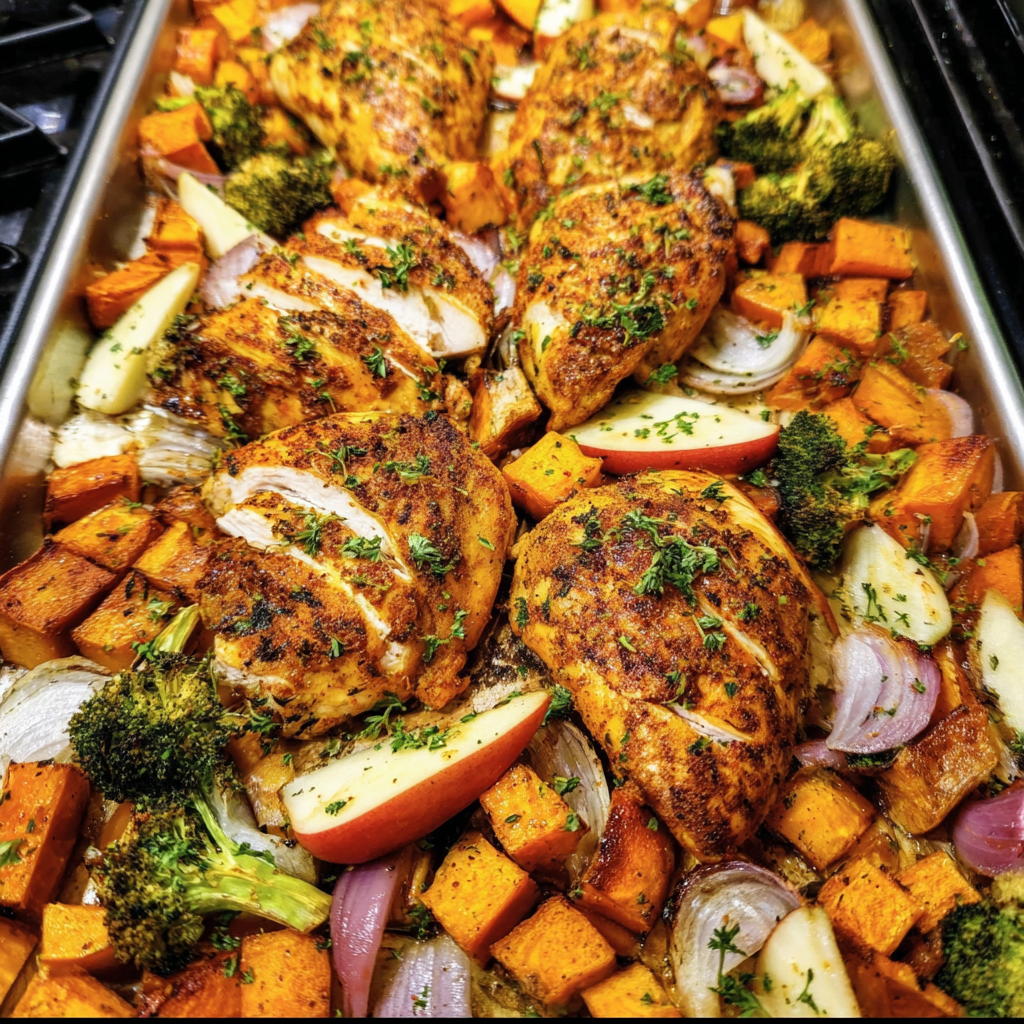
Reheating Best Practices
Reheating your sheet pan chicken requires a bit of care to ensure it remains juicy and flavorful. The oven is my go-to method for reheating, as it helps to restore that delicious roasted texture. Preheat your oven to 375°F (190°C) and place your chicken and veggies in an oven-safe dish, covering it with foil to prevent drying out. Heat for about 15-20 minutes, or until the internal temperature reaches 165°F (74°C). This method allows the chicken to reabsorb some of its juices while warming it through.
If you’re short on time, the microwave is a quick alternative, but it often results in a less desirable texture. If you choose this route, cut the chicken into smaller pieces for more even heating, and cover the dish to retain moisture. Heat in short intervals, stirring as needed, until it’s hot all the way through.
When it comes to meal prep, consider making a larger batch of sheet pan chicken to enjoy throughout the week. This dish is not only easy to reheat, but it also maintains its flavor, making it a perfect candidate for batch cooking. Pair it with different sides each day, such as a fresh salad or quinoa, to keep your meals exciting and varied.
Food safety should always be a priority, so ensure that your chicken reaches the safe internal temperature of 165°F (74°C) when reheating. Additionally, never leave cooked chicken at room temperature for more than two hours to avoid any risk of foodborne illness.
By following these storage, freezing, and reheating tips, you can enjoy your sheet pan chicken anytime, knowing that it will taste just as delightful as when it was freshly made. Meal prepping has transformed my cooking routine, allowing me to savor nutritious meals without the stress of daily cooking. So go ahead, whip up that sheet pan chicken, and enjoy the convenience of having delicious leftovers ready to go!
Nutritional Benefits and Health Information
As someone who is always conscious of my dietary choices, I find that understanding the nutritional profile of my meals enhances my overall cooking experience. The sheet pan chicken recipe, combined with sweet potatoes, apples, and a medley of vegetables, is not just flavorful—it’s loaded with nutrients that can contribute positively to a balanced diet. Let’s dive into the nutritional benefits and health information that make this dish a smart choice for any meal plan.
Nutritional Profile
At its core, a serving of sheet pan chicken typically contains a healthy balance of protein, carbohydrates, and fats. On average, one serving (about 4 ounces of chicken with a cup of mixed veggies and sweet potatoes) can provide approximately:
- Calories: 400-500
- Protein: 30-35 grams
- Carbohydrates: 40-50 grams
- Fats: 10-15 grams
This breakdown will vary depending on portion sizes and the specific vegetables used, but this general framework shows how sheet pan chicken can fit into a variety of dietary needs.
Health Benefits
The health benefits of this dish are primarily driven by its key ingredients. Chicken is an excellent source of lean protein, which is crucial for muscle repair and growth, and it helps to keep you feeling full longer. Sweet potatoes, on the other hand, are rich in fiber, vitamins A and C, and antioxidants. They are known to promote healthy digestion and may even help regulate blood sugar levels due to their low glycemic index.
Adding apples to your sheet pan chicken not only introduces a delightful sweetness but also brings along fiber and vitamin C. Apples are known for their antioxidant properties, which support heart health and may reduce the risk of chronic diseases.
The colorful vegetables you choose to include—whether it’s bell peppers, broccoli, or Brussels sprouts—are loaded with vitamins and minerals that are essential for overall health. The variety of colors often signifies a range of nutrients, so mix it up to reap the benefits of different phytochemicals!
Dietary Considerations
When it comes to dietary considerations, sheet pan chicken is incredibly versatile. It can easily be adapted for various diets, including gluten-free and low-carb options. For those who are watching their carb intake, substituting sweet potatoes with cauliflower can create a low-carb version without compromising flavor.
If you’re following a specific dietary plan, such as Paleo or Whole30, this dish fits in beautifully. The use of fresh, whole ingredients aligns with the principles of these diets, making it a satisfying choice. Additionally, if you have food allergies, simply swap out any ingredients that may not suit your needs. For example, if you’re allergic to chicken, swapping in turkey or tofu can keep the meal intact while accommodating your requirements.
Another aspect to consider is the calorie content. While sheet pan chicken is relatively low in calories compared to many takeout options, it’s important to keep portion sizes in mind, especially if you’re managing your weight. Being mindful of how much you serve yourself can help maintain a healthy balance without feeling deprived.
In the end, sheet pan chicken is not only a convenient and delicious meal but also a nutritious one that supports a variety of health goals. With thoughtful ingredient choices and modifications, it can easily become a staple in your meal rotation, providing both nourishment and satisfaction. So, whether you’re whipping it up for a weeknight dinner or prepping it for lunches, you can feel great knowing that you’re indulging in something that’s as good for your body as it is for your taste buds.
Frequently Asked Questions About Sheet Pan Chicken
What is a simple sheet pan chicken & sweet potatoes with apples & veggies recipe?
A simple sheet pan chicken recipe with sweet potatoes, apples, and veggies typically includes chicken thighs or breasts, diced sweet potatoes, sliced apples, and your choice of vegetables such as bell peppers or broccoli. To make it easy, toss all the ingredients in olive oil, salt, pepper, and your favorite herbs, like rosemary or thyme. Arrange everything on a large baking sheet and roast at 425°F (220°C) for about 25-30 minutes or until the chicken is cooked through and the sweet potatoes are tender. For an even simpler approach, try using pre-cut veggies and pre-marinated chicken to save prep time. Serve it directly from the pan for a rustic presentation and minimal cleanup!
How do I make an easy sheet pan chicken & sweet potatoes with apples & veggies?
To create an easy sheet pan chicken dish, start by preheating your oven to 425°F (220°C). Use bone-in, skin-on chicken pieces for maximum flavor and juiciness, and cut sweet potatoes into uniform cubes for even cooking. Toss the chicken, sweet potatoes, and a mix of sliced apples and veggies (like carrots and onions) in olive oil, salt, pepper, garlic powder, and a sprinkle of cinnamon for a hint of sweetness. Spread everything evenly on a parchment-lined baking sheet and bake for about 30-35 minutes, ensuring the chicken reaches an internal temperature of 165°F (74°C). For added flavor, consider marinating the chicken overnight in your favorite sauce or using a spice rub before cooking!
Can you provide a recipe for sheet pan chicken with sweet potatoes and peppers?
Absolutely! For a delicious sheet pan chicken with sweet potatoes and peppers, start by preheating your oven to 400°F (200°C). Cube the sweet potatoes and slice bell peppers into strips, then toss them together with olive oil, salt, pepper, and smoked paprika for extra flavor. Place the chicken pieces on the same sheet, ensuring they’re spaced out to promote even cooking. Bake for approximately 30-35 minutes, turning the veggies halfway through to ensure they roast nicely. Consider adding fresh herbs like parsley or cilantro right before serving for a fresh pop of flavor!
What is the best method for making sheet pan sweet potatoes and chicken?
The best method for making sheet pan sweet potatoes and chicken involves proper preparation and temperature management. Begin by preheating your oven to 425°F (220°C) and cutting sweet potatoes into even-sized pieces to ensure they cook uniformly. Marinate the chicken beforehand in a mixture of olive oil, lemon juice, garlic, and your choice of spices to enhance the flavor. Arrange the marinated chicken and sweet potatoes on a lined baking sheet, ensuring they are in a single layer without overcrowding. Roast for about 30-40 minutes, flipping everything halfway through, until the chicken is nicely browned and the sweet potatoes are tender. For a delightful finish, squeeze fresh lemon juice over the dish before serving for a burst of brightness!
Conclusion: Mastering the Perfect sheet pan chicken
Creating the perfect sheet pan chicken is more than just following a recipe—it’s about understanding the techniques, ingredients, and cultural significance behind this beloved dish. Throughout this comprehensive guide, we’ve explored everything from the historical origins to modern variations, ensuring you have all the knowledge needed to make this recipe your own.
Whether you’re a beginner cook or an experienced chef, the techniques and tips we’ve shared will help you create a sheet pan chicken that’s not only delicious but also meaningful. Remember that cooking is a journey of discovery, and each time you make this dish, you’ll learn something new.
We encourage you to experiment with the variations we’ve discussed, adapt the recipe to your dietary needs, and most importantly, share it with the people you love. Food has the incredible power to bring people together, and Sheet Pan Chicken & Sweet Potatoes ith Apples & Veggies is the perfect dish to create lasting memories around your dinner table.


